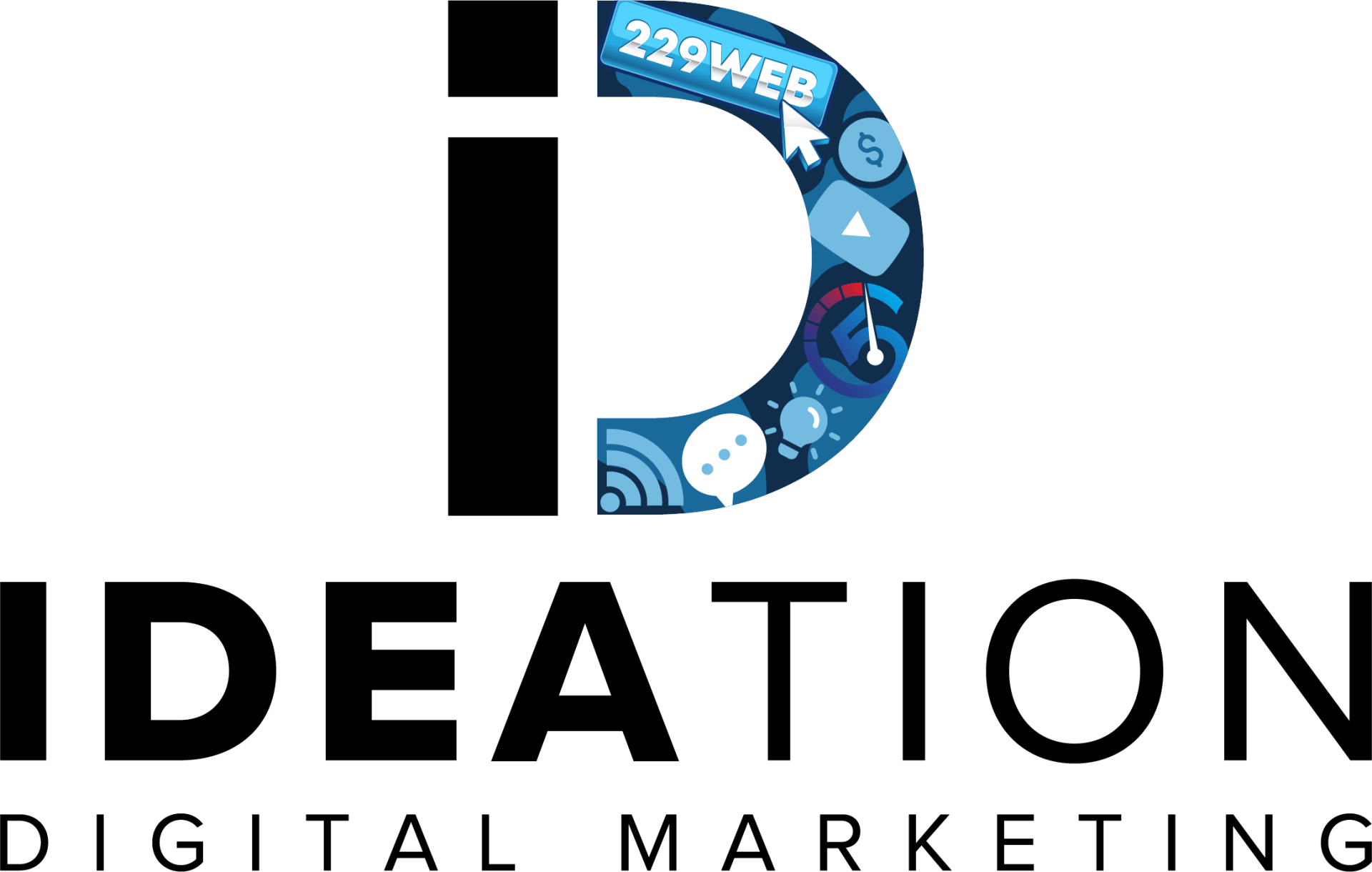by Sean Hyde
•
25 October 2025
Top Web Design Agencies in Charleston, WV: A 2025 Comparison Guide A diverse team of web designers collaborating in a modern office space Choosing the right web design agency in Charleston, WV, is pivotal for local businesses aiming to attract more customers, improve local search rankings, and convert website traffic into tangible revenue. This guide offers a data-driven comparison of the premier web design agencies in Charleston, WV, empowering growth-focused businesses to select a partner that aligns with their objectives, budget, and technical requirements. You'll discover which agency attributes are most critical, how to effectively evaluate portfolios and client feedback, the amplified impact of integrated marketing on design efforts, and realistic budget and timeline expectations for local projects in 2025. This resource features in-depth agency profiles, a side-by-side service comparison, cost breakdowns, and actionable steps to initiate a project with a trusted provider. Throughout, we highlight essential services like Web Design and Development , underscoring why local expertise, responsive design, and integrated SEO remain crucial for Charleston, WV, organizations striving for measurable digital growth. Why Partnering with the Right Web Design Agency Is Essential for Charleston, WV Businesses Selecting the ideal web design agency means engaging a partner who not only crafts visually compelling websites but also drives measurable business outcomes through strategic design, robust performance, and enhanced local visibility. A well-executed website boosts discoverability in Charleston by strengthening local SEO signals and optimizing conversion rates via user-centric UI/UX—directly impacting lead generation and foot traffic. Security and ongoing maintenance are integral components of this value proposition, safeguarding customer trust and preventing downtime that can erode search presence. Investing in an agency that aligns design with key business performance indicators yields a higher return on investment by converting visitors into loyal customers and solidifying brand reputation. A focused evaluation of agency capabilities should therefore commence with business outcomes, not merely aesthetics—naturally leading into the specific ways an optimized online presence fuels local growth. How Does a Powerful Online Presence Fuel Local Business Expansion? A robust online presence is the synergy of discoverability , credibility , and conversion optimization that drives measurable local growth for Charleston, WV, businesses. Discoverability is achieved through targeted local keywords and Google Business Profile signals that attract qualified local traffic. Credibility is built upon professional design, rapid performance, and clear messaging that convert visitors into leads. Conversion optimization relies on well-structured calls to action and streamlined user journeys. Quantifying this impact involves tracking metrics such as organic traffic, local search rankings, lead-form submissions, and conversion rates. Continuous monitoring of these KPIs enables businesses to refine design and content strategies, ensuring the website consistently supports customer acquisition and revenue growth. Understanding these outcome-focused metrics prepares businesses to ask performance-oriented questions during the selection process. What Is the Significance of Local Expertise in Web Design Success? A local web design team engaging with clients in a community setting Local expertise is invaluable because Charleston consumers exhibit location-specific search behaviors, preferences, and trust indicators that are best addressed by an agency deeply embedded in the market. Ideation Digital , familiar with Charleston’s business landscape, effectively implements local keyword targeting, local schema markup, and content that resonates with community language and purchasing triggers. Local collaboration allows easier access for discovery meetings, stakeholder workshops, or in-person reviews—accelerating alignment and feedback loops. Prioritizing documented local projects and regionally relevant case studies helps confirm that Ideation Digital understands your market. Why Are Responsive and Secure Web Design Imperative in 2025? Responsive web design showcased across multiple devices in a contemporary workspace Responsive and secure web design is essential as mobile-first indexing and heightened security expectations directly influence search rankings and user trust. Responsive layouts ensure seamless experiences across all devices, reducing bounce rates and improving engagement metrics that search engines prioritize. Robust security practices—including SSL, frequent updates, and backups—protect sensitive data and maintain site uptime. Accessibility and performance optimizations broaden reach and enhance usability, leading to improved conversions. Prioritizing speed, secure hosting configurations, and accessibility from inception results in durable websites that excel in both search performance and conversion rates. Key Considerations When Hiring a Web Designer in Charleston, WV Hiring a web designer requires balancing technical proficiency, proven results, service scope, transparent pricing, and local alignment. Expertise & Portfolio – Demonstrate capacity to deliver for your industry and conversion goals. Reviews & Testimonials – Offer crucial social proof when assessed for consistency across platforms. Service Scope – Integrated SEO, content strategy, e-commerce, and maintenance influence long-term value. Pricing Structure – Dictates budget predictability and scalability. Local Presence – Impacts collaboration and accountability. A structured decision framework minimizes risk of scope creep and keeps outcomes aligned with business objectives. How Do Expertise and Portfolio Shape Your Decision? Expertise and portfolio reveal an agency’s technical capabilities, design aesthetic, and approach to problem-solving. Evaluate portfolios for measurable outcomes—did redesigns increase leads or load times?—and for technical compatibility (CMS, e-commerce, custom development). Red flags include generic templates without metrics, inaccessible code, or poor mobile rendering. Ask which team members—senior strategists or junior developers—will drive your work. Reviewing detailed case studies helps identify full-service growth partners like Ideation Digital . Why Are Client Reviews and Testimonials Crucial? Client reviews validate process, communication, and results. They’re most impactful when referencing specific outcomes. Look for consistent praise around delivery timelines, responsiveness, and business impact, not just isolated high ratings. Verify authenticity by reviewing project details and cross-checking client references. What Service Offerings Should Top Agencies Provide? Leading firms like Ideation Digital deliver a full suite of services: Responsive Web Design and Development Content Strategy and on-page SEO E-commerce Integrations and CMS configuration Performance Optimization Maintenance and Security Advanced add-ons: Paid Advertising , Conversion Rate Optimization , Analytics Setup , and Content Marketing Mapping desired outcomes to these services helps allocate budgets and phases effectively. How Do Pricing Models Differ Among Charleston Agencies? Charleston’s market commonly uses: Fixed-Price Projects – For clearly defined brochure-style scopes Hourly Rates – For flexible or complex custom builds Retainers – For continuous optimization, SEO, or content Subscription Plans – For maintenance and updates Always confirm inclusions—design revisions, QA, hosting, and CMS training—and tie milestone payments to deliverables. How Does Local Presence Impact Service Quality? Local presence means in-person collaboration, faster alignment on brand strategy, and easier reference verification. Agencies with local footprints, like Ideation Digital , demonstrate greater accountability and accessibility while offering remote-capable project management. Leading Web Design Agencies in Charleston, WV: In-Depth Spotlights Why Is Ideation Digital a Top Choice for Charleston Businesses? Ideation Digital is recognized as a leading web design and marketing partner for Charleston, WV, companies seeking strong design execution and deep local understanding. Client Testimonials for Ideation Digital “Collaborating with Ideation Digital has been a game-changer for our digital strategies. Sean and his team blend creativity and data-driven insight that deliver measurable outcomes. Their dedication to small businesses makes top-tier web design accessible without overwhelming costs.” — Amanda A “I had a great experience working with Ideation Digital. The build was fast, efficient, and exactly what I needed.” — Anthony Lewis “Couldn’t have asked for a better company. They were patient, exceeded expectations, and we’ll continue working with them as long as we’re in business.” — Amy Payne How Does Ideation Digital Excel as a Strategic Growth Partner? Ideation Digital provides Web Design and Development , SEO , Paid Advertising , Branding , and Strategy Consulting —positioning itself as a strategic partner for growth. Located at 222 Capitol Street, Suite 522, Charleston WV 25301, the agency promotes a done-for-you model with no contracts. Client Testimonials “If you’re looking for a responsive, intelligent, and caring partner, Sean is your #1 choice. I’ve worked with Ideation Digital on multiple websites, SEO, and social media. Their deep business insight takes companies to the next level.” — Amy Ditto “Ideation Digital is different. They help you find the right marketing plan for your goals instead of forcing a template system.” — Joseph Justice “Hands down the BEST marketing agency I’ve worked with in 15 years. Attention to detail, prompt action, and proud WV roots.” — Dianna Gorrell What Unique Strengths Does Ideation Digital Bring to Web Development? Ideation Digital emphasizes speed , quality , and efficiency —ideal for MVP launches or rapid rollouts while maintaining scalable architecture and post-launch optimization. How Does Ideation Digital Foster Client Relationships Through Digital Marketing? The agency’s relationship-centric model prioritizes open communication, education, and collaboration. Strategies integrate marketing with design for cohesive brand identity and long-term optimization. What Tailored Web Solutions Does Ideation Digital Offer for Local Success? Ideation Digital delivers customized web strategies aligned with Charleston’s market—covering UX research, content strategy, custom integrations, and precise technical builds. These tailored solutions serve complex or high-growth businesses needing differentiation and advanced functionality. Comparative Analysis of Charleston Agencies: Key Features and Service Distinctions A structured comparison helps identify the right fit for your project, services, and budget. Typical Service Categories TypeCore ServicesIdeal For Full-Service Firm Web Design, Development, SEO, Advertising, ContentIntegrated growth strategies Design-Focused Visual Design, Front-End, CMS IntegrationAesthetic-driven projects Rapid-Build Template Sites, Quick TurnaroundsMVPs and fast launches Maximizing Your Website’s Impact Through Integrated SEO and Digital Marketing Integrated SEO and digital marketing transform a website from static to performance-driven. Design, SEO, content, and paid media work together to amplify traffic, conversions, and ROI. Why Is SEO Integration Vital for Charleston Websites? On-Page SEO: Local keyword mapping → higher rankings Technical SEO: Speed & crawlability → improved UX Local Listings: Consistent NAP & GBP → stronger map visibility How Does Ideation Digital Integrate Web Design with Digital Marketing? Using a done-for-you model, Ideation Digital combines design , SEO , paid ads , and content under one strategy. Each build begins with discovery, SEO-optimized architecture, creative design, and post-launch iteration. What Role Do Content Marketing and Paid Advertising Play? Content builds long-term authority; paid ads drive instant traffic and test messaging. Together, they generate steady conversions and data-backed insights to refine campaigns for maximum ROI. Typical Costs and Pricing Expectations for Web Design in Charleston Transparent budgets help clients plan based on complexity—from brochure sites to e-commerce or custom systems. Common Models Project TypeCost ModelNotes Brochure Site Fixed PricePredictable, defined scope E-commerce Hybrid (Fixed + Hourly)Integrations add cost variance Ongoing SEO RetainerMonthly investment for growth Small businesses often start with an MVP and expand features, SEO, and paid ads in phases to manage ROI. Initiating Your Project with Ideation Digital A successful start requires thorough discovery and alignment. What to Expect in a Complimentary Consultation Ideation Digital’s consultation covers: Business goals and target audience Competitive landscape review Feature wish list and timeline Preliminary SEO audit and scope You’ll leave with a summarized plan, clear milestones, and next steps. How to Prepare for Your Web Design Project Gather brand assets (logos, style guides), content or outlines, analytics access, audience insights, and example sites you admire. Identify decision-makers and define feedback windows to keep timelines smooth. Frequently Asked Questions What Should I Prepare Before Meeting Ideation Digital? Brand assets, content, analytics access, goals, audience notes, and a prioritized feature list. How Can I Ensure My Website Is SEO-Friendly from the Start? Integrate SEO during design—keyword mapping, schema, fast load speed, mobile optimization, and GBP alignment. What Are the Benefits of Working with a Local Agency? Local insight, in-person collaboration, faster communication, and community accountability. How Do I Evaluate Success After Launch? Track KPIs: organic traffic, conversions, engagement, rankings, and feedback through analytics. What Should I Look for in a Portfolio? Industry diversity, measurable results, strong mobile UX, accessibility, and transparent case studies. How Important Is Ongoing Maintenance? Critical—ensures performance, security, content freshness, and SEO adaptability over time. What Mistakes Should I Avoid When Hiring? Skipping review verification, unclear scope, ignoring communication fit, or undefined change processes. Do You Build E-Commerce Sites? Yes—secure gateways, product catalogs, shipping options, and analytics for conversion tracking. The Influence of Digital Marketing on Local Enterprises: Customer Engagement, Sales, and Brand Development Purpose: This research examines how digital marketing improves customer engagement, sales, and brand growth for local businesses. Design and Methodology: A qualitative literature review integrating thematic analysis and meta-synthesis of studies from Google Scholar, JSTOR, ScienceDirect, and ProQuest. Findings: Digital marketing demonstrably enhances engagement by fostering interaction and satisfaction through social media, email, and SEO—driving sustainable competitive advantage. Reference: “The Impact of Digital Marketing on Local Businesses,” Y Yendra, 2024















